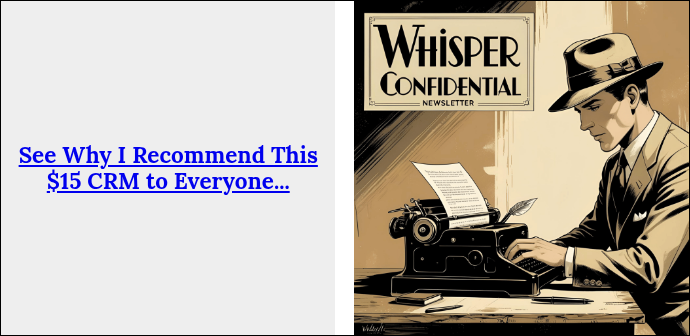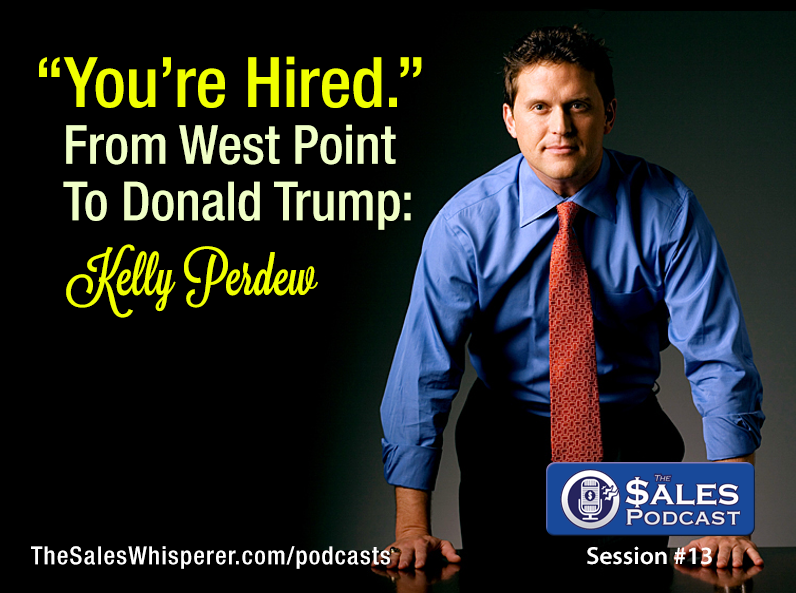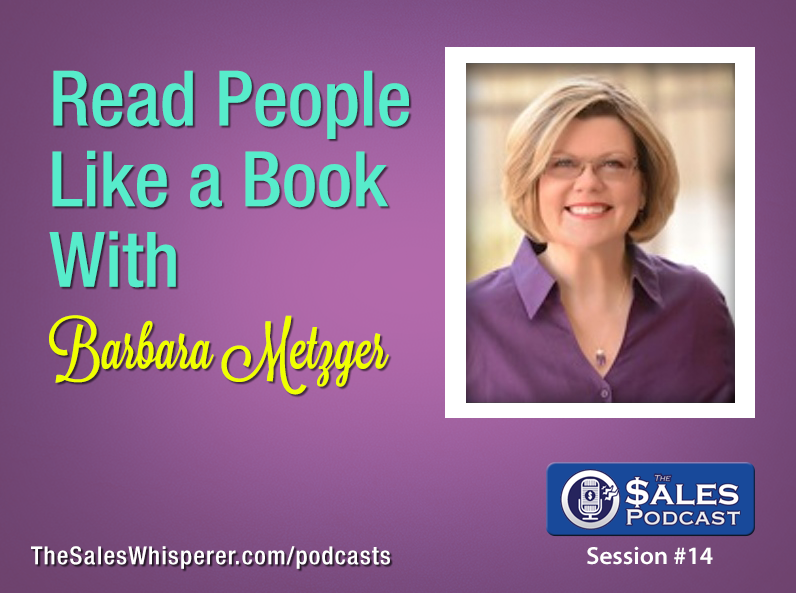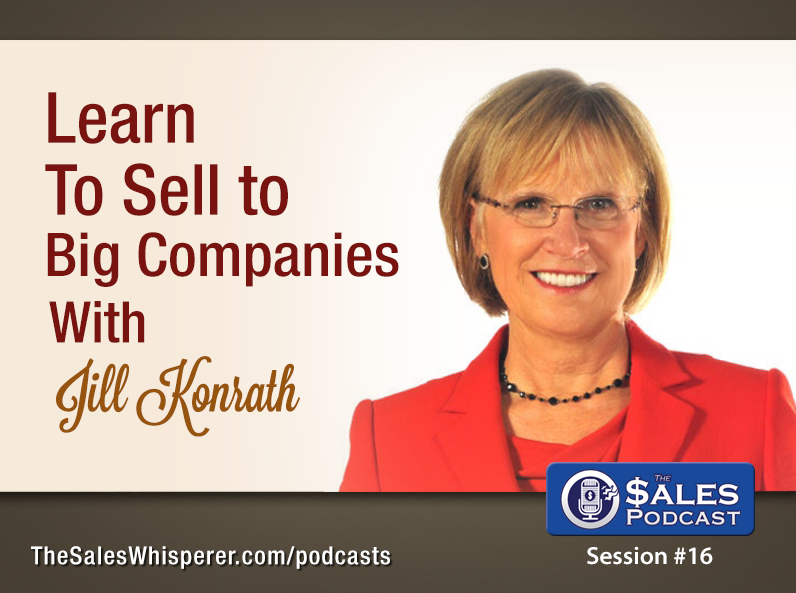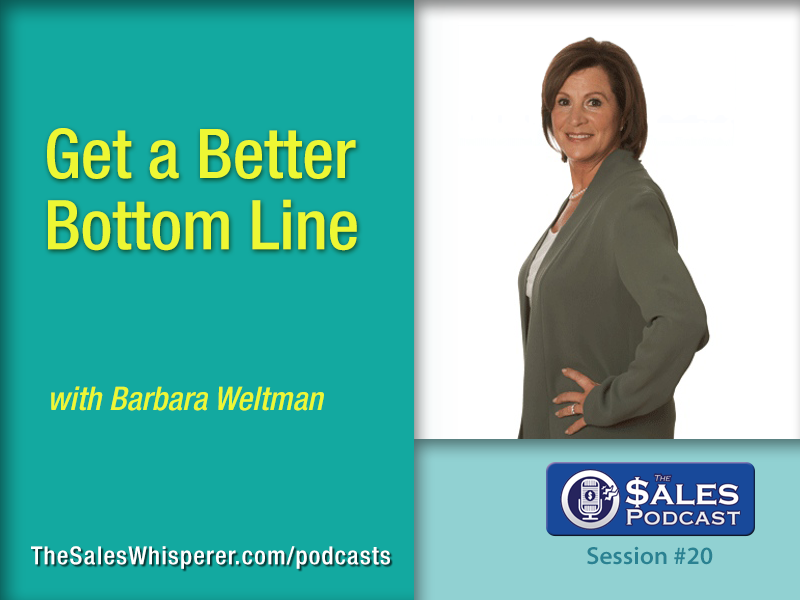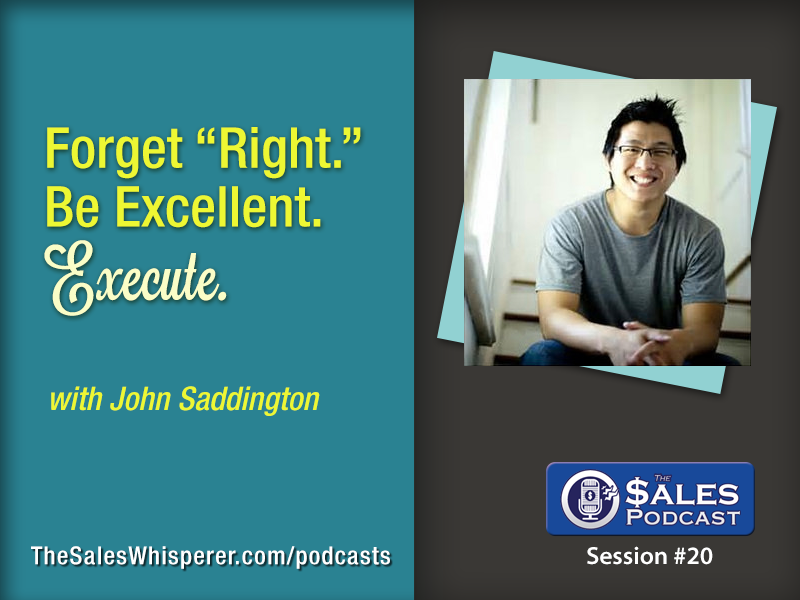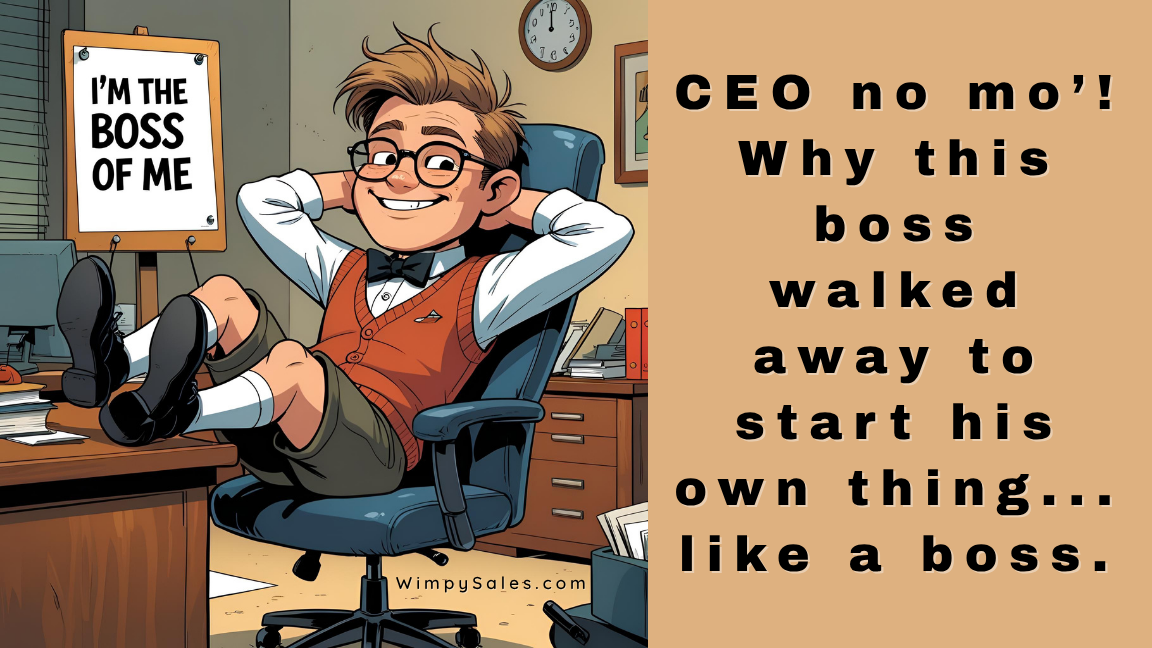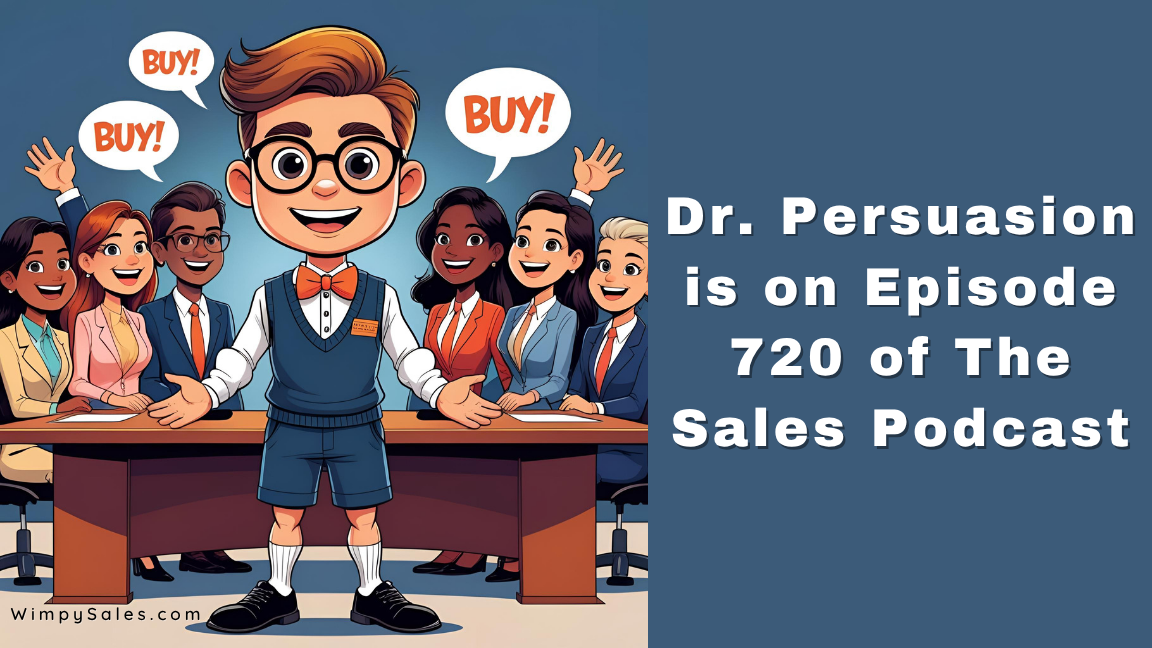
The Sales Podcast Episodes 11-20 | Amy Porterfield, Jill Konrath...

Episode 11: Amy Porterfield
Episode 12: Pamela Slim
Episode 13: Kelly Perdew
Episode 14: Barbara Metzger
Episode 15: Jay Baer
Episode 16: Jill Konrath
Episode 17: Eric Lofholm
Episode 18: Barbara Weltman
Episode 19: Cliff Ravenscraft
Episode 20: John Saddington
The Sales Podcast Episode 11: Facebook Expert Amy Porterfield
Amy Porterfield started at Harley Davidson.
She moved on to Tony Robbins for 6.5 years, where she was the director of content development until 2009.
She was ready to "live a life on her own design."
Related Posts:
- Brian Swichkow, The Ghost Influencer Is Spying On His Roommate With Facebook
- Does Your Inbound Marketing Strategy Include Paying to be Invisible Online?
- Google Direct Mail Marketing? Really?
She didn't initially try to niche Facebook.
She was actually guest blogging for Michael Stelzner at Social Media Examiner before it was even live! (She said "Yes" to a lot of things to establish herself.)
After a while, Wiley contacted her to publish a book, which became "Facebook Marketing All-In-One For Dummies." (My Amazon affiliate link to her book.)
Amy learned she had to put herself out there with great content and do it consistently. In the beginning, she was simply summarizing articles for Social Media Examiner. So she wasn't even creating the content. She was just a behind-the-scenes editor doing "grunt work."
But she learned the importance of two things:
- Relationship building
- Growing her email list
She took those tips to build a successful business.
Now Amy does no private consulting, but she focuses on producing a few quality programs each year, with an emphasis on her Facebook marketing course. Her great content keeps her followers interested, so "When I promote, I feel like I've earned it!"
Amy's primary promotional tool is webinars, and they are free and packed with content.
To build her list, she likes to keep people inside of Facebook with a custom app. (She uses LeadPages.net, which integrates nicely with the major email platforms, including Aweber and Keap CRM.
She also recommends Thunderpenny, which has a cool static HTML app for Facebook that lets you pull web pages right into your Facebook Tabs.
Amy does a podcast every two weeks, and that is posted on her blog. She has a guest blogger come on once per month, so that accounts for 3 out of 4 weeks of her blog posts.
To round out each month, she converts a tip or two from past webinars to provide new, fresh content, and just like that, she has four posts a month without having to stare at a blank screen all the time!
Now, after years, she has a part-time Content Manager that helps her pull all of this together.
Amy's Content Manager will actually produce up to a month's worth of updates, and Amy will review them and edit them and make sure the updates are in her own voice, but her manager helps make it happen.
Amy is a big fan of Slide Share. (See my interview with Ana Hoffman on repurposing content.)
She describes her success in generating both better traffic and leads with Slide Share. Add links and have a great first slide and I must admit I have used them for years, but only barely. I'm now looking more into how I can leverage this great program.
You can also see more of Amy and her genius marketing friends at The Marketing Agents.
To sign up for her next big event, visit her website at AmyPorterfield.com.
In summary, Amy encourages you to "Say Yes" to a lot of activities and take massive action. Put yourself out there. Get in the mix, and good things WILL happen.
To increase your chances of meeting Amy, she recommends you attend ProBloggers and Social Media Marketing World, which is put on by Social Media Examiner.
Links Mentioned
- Visit Amy Porterfield's website at AmyPorterfield.com.
- Connect with Amy Porterfield on Twitter
- Enroll in Amy Porterfield's FBInfluence
Share your appreciation for this episode by letting my guest and me know on Twitter.
The Sales Podcast #12: Pamela Slim (Escape Cubicle Nation & Embrace Your Entrepreneurial Spirit)
Pamela Slim is the author of two books on entrepreneurial spirit:
- "Escape From Cubicle Nation: From Corporate Prisoner to Thriving Entrepreneur"
- "Body of Work: Finding the Thread That Ties Your Story Together"
Writing a book is a great way to create a cohesive narrative to get your message out there.
Since there are so many people putting out content, being "vetted" by an established publisher helps you with social proof.
Pamela Slim has been in business for 17 years. For the first 10, she was consulting with larger corporations on the human aspect side of things. While there, she noticed that there were many people that wanted to leave but were afraid to do so.
Related Posts:
She started her blog eight years ago to help her as a business development tool.
Guy Kawasaki gave her a shot on his blog.
She sent Guy an email about one of her blog posts.
She was a fan of his and had never met him, and within 10 minutes he replied and asked her to turn her 4 points into 10 points she finished it at 2 am, and he posted it the next morning. She went from 100 followers to 20,000 overnight.
Too many people feel that they are not worthy, but we are all equal. Approach people as a "less-experienced equal."
It's all about who knows you, and they know you because of the great work you are doing, according to Guy Kawasaki.
"I live for the emails," where people tell me they read my stuff, and my tips helped them.
"We all suck when we start." We all move through the Consciously Competent model.
Get your content in front of those people it's for.
Build the app, write the blog, start the podcast, make the YouTube video, and choose the tool that is most frequently used by your audiences.
Your website is your hub.
"Body of Work" - work is inherently unstable now. This is our new normal. Career paths are unstable. The one thing we can control is the body of work we create: podcasts, code, and products.
Things are not all black and white. Corporate America is not all bad. Being an entrepreneur is not all good.
The goal is to be flexible.
Escape From Cubicle Nation is Pamela Slim's site for her first book, and Pamela Slim is where she is rebranding herself and expanding her offerings since "escaping" is not the best message for corporate clients to bring her in.
We need to develop our story-telling skills: what we tell ourselves and what we tell our audience.
Start your brand small.
During the first 6-12 months in business, "everything is a hypothesis." You must experiment and figure out what you do well and what is unique.
You must be able to answer: what do you do, and who do you do it for!
The One Page Business Plan—fun book. Graphical display. It can help you boil down what it is you do.
Tim Berry - Palo Alto Software—LivePlan—in the cloud tool for financials, education, your mission statement, etc.
Not planning "almost never has a good outcome."
Create your life plan first, and your business plan will come from that. Without that, you'll end up chasing the wrong plan.
Don't look over your shoulder and think you want what others have if it's not you.
The High Council of Jedi Knights: must be good producers and good people.
Under-charging? It's more prevalent with women than men, but most entrepreneurs do under-charge. You need to get clear on the value you provide.
Skip Miller helped her with her approach to pricing. He charged clients $30,000 for an hour of help because if just two salespeople with $300,000 quotas got 10% better, they had a 100% ROI.
Take some time out and step back and evaluate your priorities and efficiencies.
Thank you for checking out this session of The Sales Whisperer® podcast. If you haven’t done so already, I would love it if you left a quick rating and review of the podcast on iTunes by clicking on the link below! It would be extremely helpful for the show!
The Sales Podcast #13: Donald Trump Told Kelly Perdew "You're Hired" (West Point Grad-Turned Venture Capitalist)
TECHNICAL NOTE: Every now and then, my microphone needs to be "reset," and I did not realize this until AFTER the interview. The good news is Kelly Perdew came through just fine, but I have this weird, deep, sluggish sound. I assure you I was not drinking too much cough syrup! If you listen at 1.5x or 2x (as I do for most podcasts), you won't notice anything. But in a way, it's kind of funny...as long as it's not your microphone messing up!!
Here are the notes from the call:
Avoid getting into debt so you can make clear-headed decisions.
Kelly Perdew saw the example his father set for him as an entrepreneurial land developer, but he didn't think about becoming an entrepreneur until later. He believes in "optionality" - keeping doors and options open.
How do you define risk? How do you decide what to pursue?
The 2000 dot com bubble and the 2008 financial bubble should make you aware of the fact there is no security even in a big company.
As an entrepreneur, you can see the end of the road, and your clients are your bosses even when you're the owner.
He leveraged his business school studies to apply the courses to his actual business.
He worked 20 hours a week while he got his business degree, and as a California resident, he was able to attend college affordably.
He came up with a good title for his book, and that made his publisher happy. "TAKE COMMAND: 10 Leadership Principles I Learned in the Military and Put to Work for Donald Trump."
In the Cash Flow Quadrant, he is a fan of cash flow that comes in while you sleep, and he invests in startups that he likes and that he can help with the leverage of his contacts.
Hear from another competitor on Donald Trump's "The Apprentice," Marshawn Evans
The Entrepreneurial Spirit is the backbone of America.
As an angel investor, Kelly Perdew says don't be greedy. Get the right partner and the money you need to grow quickly rather than fight over every nickel and dime.
Make decisions and follow through with them with a plan. Your people need to know you have a strategy to attack a market. Your clients need to know you have a plan.
Any plan you create will be wrong, but the fact you have a plan and can adjust from that starting plan.
A napkin to a financial plan to a PowerPoint that shows you know what you're doing can all work. You need to be able to communicate effectively.
The successful have a command of the specifics with an end in mind.
You need your own personal plan. Are you creating a lifestyle business? What's your exit?
The happiness piece is critical.
Social media is just another medium.
We call it social commerce. It's about behavior and influence. We are selling goods directly on Facebook. It's not all about just getting Likes.
Facebook, over the last two years, describes itself as a direct marketing channel.
Donald Trump is a great guy. He's loyal and he demands that from his people."
You need to understand whom to leverage media and spin it to your favor.
Think big. If you're going to raise $500,000, go raise $5,000,000, it's probably easier. Step back and step back and step back again and ask how you can build something big.
Most of the successful people I know have had horrible learning experiences in their past.
Success and failures - treat the impostors the same.
Family motivates him, and he is inspired by his projects.
We want to be surprised and inspired by the people on our teams.
Clients are clients, and fire drills happen.
Don't give up. Be passionate. Have a plan.
Hear from another competitor on Donald Trump's "The Apprentice," Jennifer Murphy
Links Mentioned
Now go sell something.
The Sales Podcast #14: Barbara Metzger: Read People Like a Book
TECHNICAL NOTE (2): For the first time ever, I conducted two interviews on the same day, back to back. So the same microphone issue I had with Kelly Perdew in Session 13 is in play in this interview with Barbara. The good news is Barbara's sound came through just fine, but I have this weird, deep, sluggish sound again. I assure you I was not drinking too much cough syrup even once, let alone on back-to-back interviews!! :-) If you listen at 1.5x or 2x (as I do for most podcasts), you won't notice anything. But in a way, it's kind of funny...as long as it's not your microphone messing up!! Here are the notes from the call:
Barbara Metzger has 23 years of experience working with personality assessments.
Assess yourself first so you can understand yourself and understand how others see you.
Statistically, those that are driven to make better use of their time, energy, and money are the top producers.
Related Episodes:
- Use Mind Reading To Close Sales With Ian Rowland
- Dr. Tony Alessandra, The Doctor of DISC
- Steven Sisler Helps You Know What Makes You—and Your Prospects—Tick
- Bill Stierle: Convert and Sell More With Better Communications Expert Advice
Emotional Intelligence (EQ)
It's not an oxymoron. It's our emotional maturity. How we interact with people. It's a more accurate and important indicator when determining interpersonal and leadership success.
Know who you are. Recognize your own emotions and how your control them to deal with life.
DISC's modern version came about in 1928, so any of the 4-type descriptions you hear - colors, animals - are based on DISC.
When things don't quite feel right after an interaction with another person, it is probably because the other person was masking their true self with different mannerisms, etc.
High Traditional / High Regulatory—those who love systems and a place for everything—those people are willing to die for their belief systems.
Some rough rules of thumb on attire:
- If they are dressed in a loud manner, they'll buy from you because they like you.
- If they are wearing a conservative suit, they'll buy from you based on the facts.
- If they are wearing a 30-year-old suit, help them understand.
Millennials, in a lot of ways, appear to be breaking old paradigms, but they are just more attuned to the EQ. This age group is much more aware of what is good for the whole.
It's easy to pick up these clues on the phone.
Curt, direct types are High D's.
Friendly types/talkers / team players want a personal conversation before business.
A slow, steady answerer is an engineer type.
Without assessments, you'll hire people like yourself.
This can be bad if the sales manager is hiring the accounting manager.
In the U.S. today, 30% of employees are actively disengaged. They are sabotaging your business. Another 1/3rd are just disengaged.
People quit because they don't feel appreciated, not for money.
Learn more about Barbara Metzger and her assessment services at her website, MaxProductivity.com
If you liked this episode, be sure to let Barbara and me know on Twitter.
Now go sell something.
The Sales Podcast #15: Convince & Convert With Inbound Marketing Expert Jay Baer
Key Inbound Marketing Sales Tips From Jay Baer
Be patient with creating your inbound marketing via social media. Have more realistic expectations about the time it will take for you to be successful with social media.
Talk about others and let those others talk about you online.
Marketing "unicorns" are really just another horse, whether it's SEO, banner ads, or social media.
Many companies mistakenly think they will create customers from scratch on social media, and they're not!
Social media is not a great customer acquisition tool.
It's more of a loyalty and retention play. You never go to Facebook and like some company you never heard of.
74% of people that like Facebook pages are current or former clients.
Social media marketing is turning your existing customers into volunteer marketers.
Social is a lot more like email than other technologies. It's a way to keep your company top-of-mind with those that have given you permission to do so.
Social media marketing is more of a "customer-keeping engine" than a lead generation tool.
It's a unique time when organic and paid searches appear together.
PPC on Facebook is not social media. It's advertising running on a social network.
If you're not great at email, you have no business doing social. If you can't send out one great thing a week or build a nurturing sequence inside Infusionsoft, why would you want to tackle something that happens in real time?
People think social is magic, exciting and new.
Email is Madonna.
Facebook is Lady Gaga.
It's the same thing with a fresh coat of paint.
Social isn't inexpensive. It's just a different intensive. It's very time-intensive. Jay is not a huge proponent of outsourcing social for smaller businesses. It's your voice.
Outsourcing your social isn't the same as outsourcing your accounting.
Jay is a big fan of outsourcing your social consulting to understand what to use and leverage to grow.
Not a fan of aggregators. Craft distinct messages for LinkedIn, Pinterest, etc., even if the message is about the same content.
First, have a good product.
Social media isn't going to patch up your wounds.
If your company sucks, Twitter is the least of your worries. Companies that are great at social media are usually great companies.
Is Facebook dead? Teenagers are moving to Instagram, Twitter, and Snapchat...but Facebook is not dead, but it's gotta be a concern that the younger audience is moving somewhere else. I don't want to use the social network my dad is on. Facebook is not as fast or as immediate or visceral as Instagram and Twitter. But remember, Facebook owns Instagram, so they'll get you coming and going.
All of Jay's 5-6 blogs are on WordPress.
100% of the time, the very, very first thing I tell people to do on social media is to write a blog.
Answer every customer's question to help you start writing. (Jay discusses this in his new book, Youtility.) [affiliate link]
That should be 100 blog posts easily. Build your ultimate FAQ about your business.
The key is to be honest and proactive about your shortcomings in your FAQ. The more you can proactively tell people when you're not the right solution, the more trust they'll have in you.
You attract to the same degree as you repel.
Provide marketing so useful that people would pay you for it. Give away most of what you know to create customers over the long haul.
The best time to plant a tree is 20 years ago. The second best time is today. The same is true for inbound marketing.
There seems to be an insatiable thirst for video. People don't want to read. They want things faster.
There is no reason not to have video. Anybody can do it with an iPhone.
Companies of all sizes need to find a way to tell their story via video. Blog posts and pizza: even bad posts and pizza are okay, but that's not the case with video. Make sure you do it right.
Get started. Set your camera on a tripod and do a 1-minute video for each of the 100 blog posts.
Use Screenflow or Camtasia to do video.
Even financial services companies or banks or other companies with tough government regulations can do some interesting things with social once they understand what the rules are, so there are no exceptions. Saying we're not going to do social because we're different is like saying we won't have a telephone because we're different.
Be a resource to your fans/followers/subscribers.
Be everywhere.
The goal isn't to be good at social media. The goal is to be good at business because of social media, and those aren't necessarily the same things. Don't care so much about how many people like you because you can't eat those.
Sites Mentioned:
Learn more about Jay Baer and his services at his websites, Convince and Convert and Jay Baer.
The Sales Podcast #16: Jill Konrath, Author of "SNAP Selling" and "Selling To Big Companies"
Sales Training Expert Jill Konrath
Author of
- "SNAP Selling: Speed Up Sales and Win More Business with Today's Frazzled Customers"
- "Selling to Big Companies "
- "Agile Selling: Get Up to Speed Quickly in Today's Ever-Changing Sales World"
Today's buyers are so savvy…
about what's out there and know they have many options and go online to find the answers they need.
By the time they get to a salesperson, they are well-educated and may have an opinion about what they need.
Sellers are still stuck in the mode of thinking they must sell and convince and that they are best, but the prospect is looking to have a conversation with an intelligent person that can help them.
Salespeople must educate themselves about their prospects and get in alignment with them. Drop the sales mentality and seek to serve and help them achieve the goals they are trying to reach. "Take off the stupid sales hat!"
Product knowledge without sales skills is worthless.
People are overwhelmed and don't want to make a change.
If people are meeting with you, there is a high likelihood they'll Google you. What will they see? Do you have a "job-hunter" resume on LinkedIn? It may be impressive to a VP of Sales but not to most clients.
LinkedIn is a place for anyone to establish a professional appearance and show that you are a real human being to your prospect. This immediately set you apart from every Tom, Dick, and Harry out there.
Rapportive is a great tool for looking up people online through your browser.
LinkedIn is a great tool to help you find information on prospects.
Jill uses a saved search for VPs of Sales in technology companies within 50 miles of Minneapolis. (Learn more about Saved Searches.)
It also alerts her when there are changes at companies, which tells her when to contact them with new ideas.
Don't try to connect with a hot lead at first. See if you have a contact that is connected with them, and maybe even call that friend to help you connect with the hot lead.
Jill has an eBook, "Cracking The LinkedIn Sales Code."
Fascinating survey on the difference between top sellers and everyone else. They:
- Have really good profiles.
- They research far more and far deeper.
- They find multiple connections within an account.
- Many are active in groups and active in groups that their targeted customers belong to. (There are groups for just about anything.)
Join LinkedIn groups but never, ever pitch!
Comment. Post interesting information. Be seen as a giver, a helper, as opposed to a taker or shark.
(Check out "Sales Wisdom From The Wild.")
"The Challenger Sale: Taking Control of the Customer Conversation." [affiliate link]
Turn yourself into a resourceful person, not just a salesperson. Be a consultant leading with ideas and insight that's valuable.
Cold calling still works if you do your homework.
People are too busy to listen to someone that hasn't been willing to invest time learning about them prior to meeting.
They are very discriminating.
Cold Calling will work if you've paid your dues and done your research, and crafted a message that speaks directly to the person. But it's not cold then because you've figured out what's important and how to talk to that person as an equal.
Related Interviews:
It's stupid to go straight to the top of a big company unless you're selling an enterprise solution. You need some ground-changing products or services with insight from the middle to go to the top. But how many of us sell game-changing ideas.
Having a script is important, and read it out loud a gazillion times but don't memorize it. Make it your own and personalized, so it sounds like you're just talking. Most scriptwriting is disgusting. They lead with themselves and their companies and are just boring.
Most people have lousy scripts. In the first sentence, you need to sound like a credible resource, and the second sentence has to pique curiosity and then suggest a logical next step.
Knowing how a product is used is more important than knowing all about the product. That helps you ask great questions.
Most people haven't had sales training. They've only had product training.
The game has changed, and so have the customers and their expectations, so it's okay to bring in outside help.
Your customers are sitting with their fingers on the Delete button.
The same with the phone.
To set better appointments, have a better premise for setting a meeting in the first place. Just showing up to talk about your stuff makes you easy to blow off. You need to be relevant and high priority. Maybe offer to set a short initial meeting over the phone.
People are hesitant to give up an hour or half an hour of their time to a stranger. So start small. So make sure your time is done well.
Treat receptionists and executive assistants the same way you treat the decision-maker. Focus on the business issues.
Leave a voicemail and a good message that follows the same pattern if you got them on the phone. Establish credibility and pique curiosity and suggest a time to get together and reference that you're going to send an email.
Be creative with leaving a series of voicemails if the prospect is a big enough opportunity. Don't cram all of your information into one voicemail. If you have three bullet points, leave three messages.
I don't use war analogies in sales, but if you see an opportunity, you need to plan on 8-10-12 touches. People are so busy they may just arbitrarily delete even a wonderful message. Send links to articles, a link to a PDF...just keep going until the campaign has run out. And call on multiple people.
Learn more about Jill Konrath and her services at her website, JillKonrath.com.
If you liked this episode, be sure to let Jill and me know on Twitter.
Share your appreciation for this episode by letting my guest and me know on Twitter.
The Sales Podcast #17: Create Sales Success With Professional Sales Training, Eric Lofholm
Eric Lofholm rose up from sales failure in 1992 to sales champion, sales trainer, and sales author
Eric went from "worst to first in 60 days" when he received professional training from Dr. Donald Moine, who wrote "Unlimited Selling Power."
He then went on to work for Tony Robbins and then launched his own training company in 1999.
When he learned a system, a sales process, things fell into place.
Technology and social media today help you create leverage and multiple touchpoints to grow your sales.
Technology is a tool, but it doesn't create a connection. Most people need that human element to build trust. Especially when it comes to joint ventures and collaborative relationships. You need to go break bread.
In Eric's new book, "Everybody Sells," he addresses how everyone, attorneys, etc. understands they need to market and sell, and everyone is more open to sales training than ever.
Four levels of group training.
- Level One is Sales Processes followed by...
- Sales Scripting in Level Two. The idea is you need to know what to do and when to do it. You need to be prepared for what comes up in prospecting and selling situations.
Words and sequences that have meaning are the definitions of a script. Once you realize that "winging it" is still a script, you embrace scripting. This actually frees you up to make better connections when you learn the language of selling and connecting.
People respond in predictable ways.
Professionals leave nothing to chance.
Eric Lofholm is a natural introvert, but when you are following a sales system and a structure, you can succeed in sales, and there is hope for you.
We want the prospect to say "Yes" unless we want them to say "No." The old adage of always going for "Yes" has changed.
Are sales trainers a threat to a sales manager? No. Things have changed. The environment has changed. I work in harmony with the sales management team to reach a common goal.
You can't polish a tennis shoe. (Not everyone is trainable.) Eric needs some talent to work with at your sales organization.
What's your "energy advantage?" Basically, make sure your style and preferences are in line with your sales duties.
Marketing touches beat just cold calling. Blend multi-media to achieve multi-touches in your prospecting sequences.
Prospecting and Sales success starts with your intention. Follow "stage selling." Making the sale with the gatekeeper/receptionist is the first sale! Build rapport and be friendly with that receptionist.
You have to help them tilt the sales teeter-totter in your favor. You have time on one side and value on the other. Prove to them that you'll provide value for the time you'll take.
Be creative and leverage contacts and social media, etc., to get your foot in the door. If your commitment is to reach that person, you'll convey that message and that intention, and you'll do what it takes to make it happen.
Embrace a sales script.
Then learn it. Then weave in and out of the script to leverage your creativity and personality to excel at sales.
Dr. Moine referenced research that showed selling skills beat engineering knowledge in a study, but it's all about connecting with people.
Eric's new book focuses on this sales process.
Eric offers one to four free training sessions per month. Sign up at his site below.
Eric does live training because it's what he loves doing. He offers a 3-hour, live, interactive, professional sales training once per month. It's free and high-quality. The energy is different. He's on Facebook during the training. It has reduced his need to do hotel ballroom training. This live interaction bonds Eric's students to him.
Anyone listening to this podcast or reading this post can succeed in sales. You can improve and be more successful and have more confidence. Hope. Possibility and Improvement.
Learn more about Eric Lofholm and his services at SalesChampion.com.
Get Eric Lofholm's newest book, The System: The Proven 3-Step Formula Anyone Can Learn to Get More Leads, Book More Appointments, and Make More Sales.
The Sales Podcast #18: Barbara Weltman—The Entrepreneurial Spirit Is To Fight The IRS
Barbara Weltman is an attorney, and a prolific author with such titles as
- J.K. Lasser’s Small Business Taxes 2016
- The Complete Idiot’s Guide to Starting a Home-Based Business
- Smooth Failing: Top industry leaders share their secrets for turning Pain into Profit [Living Edition]
She is a trusted professional advocate for small businesses and entrepreneurs.
Barbara is also a guest columnist for The Wall Street Journal and U.S. News and World Reports and contributes regularly to American Express OPEN, SBA.gov, and Entrepreneur and is the publisher of Idea of the Day® and monthly e-newsletter Big Ideas for Small Business® at her site, Barbara Weltman, and co-host of Business Leaders radio.
Learn more about Barbara Weltman and her services at BarbaraWeltman.com.
If you liked this episode, be sure to let Barbara and me know on Twitter.
Share your appreciation for this episode by letting my guest and me know on Twitter.
Thank you for checking out this session of The Sales Whisperer® podcast. If you haven’t done so already, I would love if you left a quick rating and review of the podcast on iTunes by clicking on the link below! It would be extremely helpful for the show!
The Sales Podcast #19: Podcasting A to Z With The Podcast Answer Man, Cliff Ravenscraft
Cliff Ravenscraft is the founder of The Podcast Mastermind and gspn.tv (Generally Speaking Production Network).
Together with his wife and a few close friends, Cliff has produced over 3,000 podcast episodes since December 2005, devoted to Entertainment, Family, Faith, Fitness, Career, and Technology.
In January 2008, Cliff left a very successful career as an insurance agent to pursue podcasting full-time. He felt called to spend his life serving the community that had formed around the many shows in his network.
Being a husband and father of three, he needed to find a way to produce content, serve his community, and also provide for his family.
Cliff focused on successfully generating income through coaching/consulting at PodcastAnswerMan.com. He has helped thousands of individuals and organizations launch successful podcasts through his one-on-one consulting/coaching and through his online training courses.
Part of the reason he was able to go out on his own was that he and his wife got debt-free!
They followed the advice Dave Ramsey espouses and got out of $80,000 in debt over about five years, and the rest is history!
Next, he got clear on what he wanted to do.
He can't help people create "niches to make money" out of thin air. So you need to get clear on what you want to do, "find something you love to do so much that you would do it all day long for free. And then become so excellent at doing that one thing that people will beg you and pay you to do it for them."
Find something you can do for 18 months and do it 20-40 hours a week on top of your day job, and you'll develop a good, solid foundation for success...but most people don't want to do that.
Cliff was fortunate in that he had a background in coding and web design. Began blogging in 1996 when it was called "web journals" using AngelFire.com and hand-coding HTML.
Discovered podcasting in 2005 and was commenting on the TV show "Lost."
He left a comment on Entertainment Weekly's website, and they picked it up, and overnight he went from 200-300 visitors per month, which was pretty good for a "guy in Northern Kentucky."
He called in and left a voicemail with his theory about the show "Lost," and gave his website with more information on his theory. EW.com did an entire show on his theory and linked to it.
He went to thousands of visitors per month overnight!
So he spent $15 on a microphone and got some free software, and within a few days, he had his podcast up on iTunes, and by the third episode, he had 17,000 subscribers.
By 10-15 episodes, he had 10-15,000 people listening to his podcasts.
You never know who is listening to anything you put online."
iTunes was making each episode available the next day for purchase, so his podcast was found right next to it. But you can duplicate it with popular culture.
In the business category on iTunes, 40 of the top 50 business podcasts are Cliff's clients!
If you can get 1,000 to 3,000 subscribers, you can easily be in the top 50 in any category.
You can earn $30,000 to $50,000 per month with less than 10,000 followers. He built PodcastAnswerMan.com from scratch.
Cliff left his job in 12 months but was making $500 to $2,000 from his "Lost" podcast. (He was making money selling products and services and reselling as well as doing webinars, affiliate sales and some advertising on his site.) At the time, PodcastAnswerMan had less than 2,000 subscribers at that time.
The money came from products and services and training people one-to-one on how to podcast.
His free tutorial was at Learn How To Podcast
There is no funnel there. About 300 people per month launch a podcast without hiring Cliff, and he thinks that's awesome! Learn how to podcast with Cliff's help for free.
40,000+ people have watched the first video, and 10-14,000 people have gone through all eight videos. Most of those stay on his mailing list, listen to his podcast, and are getting to know, like, and trust Cliff. But now he's no longer available for one-to-one training. You can join his group training as a four-week course, which you can find at PodcastingAtoZ.com.
Check out Cliff's "Wordpress For Podcasters" in the Products section of his site.
Before you start your first podcast, you need to ask yourself, "Why do I want to podcast? What will I talk about? Who is my audience?" Start there.
Cliff recommends audio over video since there are 97 million people that commute alone, with an average commute time of 26.2 minutes. And they are jogging or doing the laundry or some other repetitive task that allows them to focus on every word that comes out of my mouth.
Video is expensive and takes a long time to make it professional.
You can spend less than $2,000 and sound as good as any FM radio person.
I don't want people to view podcasting as a business.
Stick with WordPress and use your website as your home on the web. Do at least one blog post per month. More if you can.
Produce a weekly podcast that runs 20-40 minutes is perfect and can become part of someone's ritual habits.
If you make a video, do more than just show your face!
Puts his videos on YouTube as he's not too worried about piracy. He wants to benefit from the SEO of YouTube. He'll use Vimeo Pro to protect premium content.
Authenticity is HUGE to help calm the fears of the listeners about people thinking I'm too big for them. It helps you take it to the next level.
Failure to launch and not knowing what to communicate is what stops people in their tracks.
Set it and forget it. Fix it and improve it later. Create an outline. Practice. Do a little prep work.
Cliff preps a minimum of an hour before each episode, and each episode is an hour in length, and then there are one to three hours of post-production work.
Screencasting is totally different. You can easily do edits, and people won't notice. Professional has benefits as well as authenticity has benefits.
Just get started. Most people's first episode is horrible!
By the end of the year, Cliff had 17,000 subscribers! He just got started. Good enough was good enough. But he does want you to improve and take it to the next level.
The average visitor spends 6-8 minutes on his site, and he gets 30,000 visitors per month.
Today's the day for podcasting!
Learn more about Cliff Ravenscraft and his services at Podcast Answer Man.
Share your appreciation for this episode by letting my guest and me know on Twitter.
The Sales Podcast #20: How to Be Excellent In Sales & Business Instead of Just Right, John Saddington
John Saddington Started young at age 14, doing programming for Johnson and Johnson and bagging groceries.
Dropped out of Georgia Tech…struggled to get a "piece of paper" (his diploma).
Worked at Dell.
Worked at Fox News.
Being an entrepreneur was not the plan.
As he moved up in management, he realized he had little respect for authority, and he realized he could do it better and move faster.
Began building his own products at night - 2006-2007.
Has had 5-6 startups since then. Some VC.
Learned Basic and Visual Basic when living in Japan.
He was self-taught.
Now, with online courses, even free courses from Stanford and iTunes Library, you can learn anything.
Entrepreneurs get frozen with ideas.
We need to force the idea of scarcity on ourselves so we focus and dig deep, and become excellent.
Execute. There is no "right" answer.
John got his "big break" with Flash development.
8Bit - his idea back in 2008-2009 - came from his frustration in building WordPress sites for his clients. It sold 30-40 copies on the first day, so he brought on three other partners to help him grow, and they grew to seven.
Mashable voted them…
Tough to "get it right" when growing a company and with changing technologies.
WordPress is still so nascent.
It's hard to stay the course long-term. Entrepreneurs get bored quickly.
There's a difference between "lifestyle" companies and "growth" companies with fast-paced growth and finding liquidity to exit.
Often we don't listen to our hearts.
John learned he didn't speak up often enough or vocally enough.
The longest he's been at a company is two years and nine days, and that was about a year too long.
On Sept 4, 2012, he began kicking the idea around for Pressgram. It was a night and weekend project. He was not happy with the Facebook and Instagram terms.
In March 2013, his wife said, "Why don't you put it on Kickstarter?" (She's the brilliant one. She's a strategist.) I've backed 200+ projects on Kickstarter for others but never for himself. So he put together the campaign overnight and launched it at 12:04 AM Saturday.
He raised $56,000+, and this became a very public project.
This had a big influence as well on how 8Bit unfolded.
Kickstarter is very "altruistic." It's not "an online store." You're there to help someone else's dream.
498 backers to reach $50,000.
Peruse Kickstarter to see what's out there and see what works and what doesn't work.
John had finished his initial wireframe and some code, but the framework wasn't really built out. It's harder to get software accepted on Kickstarter.
Indiegogo accepts almost anything.
If you have an itch to scratch, you lose almost nothing by submitting your idea.
Go ahead and get rejected to make you tighten up your pitch.
There is a small staff that reviews and approves your idea. You can appeal with 300 characters.
Built more than a prototype with Pressgram, and now he's going to go find his team.
Others will find a partner first, and that's fine, but he likes to build first. He has the energy to do it that way.
In-app purchases are how you monetize free apps.
He sees a way to build a WordPress ecosystem around this app.
If I'm not in love with what I'm building and if it doesn't scratch an itch I have and I want to use, there is just something so moving that helps me go the extra mile. That's what separates "arm chair entrepreneurs" from those that actually do it, and that gets you through the tough times.
The fundraising season is incredibly tough. My wife is emotionally and intellectually prepared for me to be a "deadbeat dad" and absentee husband as I get on planes to cross the country and even the globe.
3,264 posts—about nine a day—for 365 days in 2011 and experienced tremendous growth.
He didn't get tired of it. He wakes up around 4:30 or five and writes until 7 am. He and his wife work with boundaries. He has been journaling for as long as he can remember and has been blogging since 2001.
He has templates he uses to accelerate his production and now has internal templates.
Practice does not make perfect. Practice makes better.
John admits he's obsessed with his work. He has moved his wife many times chasing his ventures. They have been up and down the financial roller coaster. His wife is "full of grace and loves me, thank God!"
By setting up boundaries, he has incredible freedom.
When 7 am comes, he spends time with his kids. His next is from 8:30 to 2 PM. He can do whatever he wants. At 2 pm, his oldest is done with first grade, and he picks her up. From 2:30 to 7:00 pm, it's "lights off" when it comes to technology.
His wife loves reading, and he loves programming, but they'll discuss how they want to spend their evening.
Feed.ly Pro is one of his favorite apps. He was one of the first 5,000 to buy a subscription for life for $99. Seth Godin,
Doesn't have a lot of time to read. RSS feeds help.
He has noticed that highly productive people that they are so consumed with what they are doing that they have no time for "sideline commentary and are not concerned with missing something."
Entrepreneurs execute in an environment of ambiguity.
"What's hot" becomes unimportant.
I'm not concerned about my next competitor. "I could drown in worry and shame" if I focused on that.
John wants to learn something new every day.
Yesterday he learned that you can't call something a photo until it is printed. It's a picture or image until it becomes physical.





